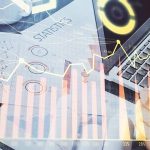1. Introduction to Market Efficiency
Market efficiency is a fundamental concept in finance that plays a crucial role in shaping investment strategies. It refers to the extent to which asset prices reflect all available information at any given time. The Efficient Market Hypothesis (EMH) suggests that financial markets are highly efficient, meaning that it is difficult for investors to consistently outperform the market through stock selection or market timing.
Exploring the Efficient Market Hypothesis (EMH)
The EMH, first introduced by economist Eugene Fama in the 1970s, proposes that all publicly available information is already factored into stock prices. This means that no investor can consistently achieve higher returns than the overall market without taking on additional risk.
Types of Market Efficiency
Market efficiency is typically categorized into three forms:
| Type | Description |
|---|---|
| (1) Weak Form Efficiency | Past price movements and trading volume do not predict future price changes. |
| (2) Semi-Strong Form Efficiency | Stock prices reflect all publicly available information, making fundamental analysis ineffective. |
| (3) Strong Form Efficiency | All information, both public and private, is fully incorporated into stock prices. |
(1) Implications for Investors
If markets are truly efficient, actively managed funds may struggle to outperform passive index funds over the long term. Many investors opt for passive investing strategies, such as index funds and ETFs, to minimize costs and match market returns.
(2) Criticism of EMH
Certain market anomalies and behavioral finance theories challenge the idea of perfectly efficient markets. Events like speculative bubbles or irrational investor behavior suggest that markets may not always be fully efficient.
(3) Relevance in Modern Financial Markets
The rise of algorithmic trading, big data analytics, and artificial intelligence has influenced market efficiency. While these advancements contribute to faster information dissemination, debates continue regarding whether markets remain perfectly efficient.
2. Types of Market Efficiency
Market efficiency is categorized into three main forms: weak, semi-strong, and strong. Each level represents a different degree of information reflection in asset prices and has significant implications for investors deciding between active and passive investment strategies.
Weak Form Efficiency
In weak form efficiency, asset prices fully reflect all past trading information, such as historical prices and volume. This implies that technical analysis, which relies on past price movements to predict future trends, would not provide an advantage.
Implications for Investors
- Active Investors: Since past price data does not provide an edge, strategies based on chart patterns or trends may be ineffective.
- Passive Investors: Favoring index funds or ETFs makes sense as stock prices already incorporate historical data.
Semi-Strong Form Efficiency
This level suggests that asset prices reflect all publicly available information, including financial statements, earnings reports, and news announcements. As a result, fundamental analysis would not consistently lead to above-average returns.
Implications for Investors
- Active Investors: Stock picking based on public financial reports or news may not yield consistent excess returns.
- Passive Investors: Index investing remains favorable since attempting to outperform the market using publicly available data is unlikely to succeed.
Strong Form Efficiency
The strong form suggests that asset prices incorporate all information—both public and private (insider knowledge). If this were true, even insider trading would not result in superior gains.
Implications for Investors
- Active Investors: No advantage can be gained from any form of analysis, making active management ineffective.
- Passive Investors: Passive investing is the most logical choice since no investor can consistently outperform the market.
A Summary of Market Efficiency Forms
| Market Efficiency Type | Description | Main Implication |
|---|---|---|
| Weak Form | Prices reflect past trading data. | No advantage from technical analysis. |
| Semi-Strong Form | Prices reflect all publicly available information. | No advantage from fundamental analysis. |
| Strong Form | Prices reflect all public and private information. | No investor can consistently outperform the market. |
The level of market efficiency influences how investors approach their investment strategies. Understanding these forms helps determine whether active management efforts are likely to be successful or if a passive strategy is more suitable.

3. Active Investing: Strategies and Challenges
Active investing involves making strategic decisions to buy and sell securities with the goal of outperforming the market. Investors using this approach rely on various methods, including stock picking and market timing, to gain an edge. However, in an efficient market, these strategies face significant challenges.
Stock Picking: Identifying Undervalued Stocks
Stock picking is a fundamental strategy in active investing where investors analyze individual stocks to find those they believe are undervalued or have strong growth potential. This process typically involves:
- Fundamental Analysis: Examining financial statements, earnings reports, and industry trends to assess a companys value.
- Technical Analysis: Studying past price movements and trading volumes to predict future price trends.
- Qualitative Factors: Considering management quality, competitive advantages, and macroeconomic factors that may impact stock performance.
The challenge with stock picking in an efficient market is that most publicly available information is already factored into stock prices. As a result, consistently identifying mispriced stocks becomes extremely difficult.
Market Timing: Predicting Market Movements
Market timing refers to attempting to buy low and sell high by predicting market trends. Investors use different approaches for this strategy:
| Market Timing Approach | Description |
|---|---|
| Technical Indicators | Using tools like moving averages and momentum indicators to forecast price movements. |
| Economic Data Analysis | Monitoring interest rates, inflation, and GDP growth to anticipate market shifts. |
| Sentiment Analysis | Assessing investor sentiment through surveys or trading volume patterns. |
The primary challenge with market timing is its unpredictability. Even experienced investors struggle to time the market correctly on a consistent basis. Studies have shown that missing just a few of the best-performing days in the market can significantly reduce overall returns.
The Challenges of Active Investing in an Efficient Market
(1) Higher Costs
Active investing often incurs higher transaction fees, fund management costs, and tax implications due to frequent trading. These costs can erode potential gains over time.
(2) Difficulty in Beating the Market
The Efficient Market Hypothesis (EMH) suggests that all available information is already reflected in stock prices. This makes it challenging for active investors to consistently outperform passive strategies.
(3) Emotional Decision-Making
Active investors may fall victim to psychological biases such as overconfidence or fear-driven selling, leading to suboptimal investment decisions.
4. Passive Investing: Benefits and Growth
Passive investing has gained significant traction over the years, with index funds and exchange-traded funds (ETFs) becoming popular choices for many investors. This approach aligns with the Efficient Market Hypothesis (EMH), which suggests that markets incorporate all available information, making it difficult for active managers to consistently outperform benchmarks.
Advantages of Passive Investing
Investors have increasingly turned to passive investing due to several key benefits:
(1) Lower Costs
One of the most significant advantages of passive investing is its cost-effectiveness. Since passive funds are not actively managed, they have lower expense ratios compared to actively managed funds.
| Investment Type | Typical Expense Ratio |
|---|---|
| Passive Index Funds | 0.03% – 0.20% |
| Actively Managed Funds | 0.50% – 1.50% |
(2) Consistent Market Performance
Since passive funds track broad market indices like the S&P 500 or NASDAQ, they tend to deliver returns that match overall market performance over time. Historically, very few active managers consistently outperform the market in the long run.
(3) Diversification Benefits
Index funds and ETFs provide diversification by holding a broad range of securities within a single fund. This reduces the risk associated with individual stock selection.
(4) Tax Efficiency
Passive investing tends to generate fewer capital gains distributions than active investing, making it more tax-efficient for long-term investors.
The Growth of Passive Investing
The rise of passive investing can be attributed to its simplicity and effectiveness. Over the past few decades, assets in passive funds have surged as more investors recognize their advantages.
| Year | Total Assets in Passive Funds (Trillions USD) | Total Assets in Active Funds (Trillions USD) |
|---|---|---|
| 2010 | $2.0T | $7.0T |
| 2015 | $4.0T | $8.0T |
| 2020 | $8.5T | $10.0T |
| 2023 | $11.0T | $10.5T |
The shift towards passive investing is expected to continue as more investors seek low-cost, diversified solutions that align with market efficiency principles.
5. Comparing Active and Passive Investment Approaches
When deciding between active and passive investing, its essential to evaluate key factors like risk, costs, and expected returns. The level of market efficiency plays a crucial role in determining which strategy is more likely to succeed.
Assessing Risk
Risk levels vary significantly between active and passive strategies. Active investors aim to outperform the market by selecting individual stocks or timing trades, which introduces higher risk due to potential misjudgments. Passive investors, on the other hand, follow a market index, reducing individual stock risk but still being subject to broader market fluctuations.
Key Risk Considerations
- Active Investing: Higher volatility due to concentrated bets on specific securities.
- Passive Investing: Lower risk through diversification across an index.
Comparing Costs
The cost structure of each approach can significantly impact overall returns. Active investing typically incurs higher fees due to frequent trading, fund management expenses, and research costs. Passive investing is generally more cost-effective as it involves lower transaction fees and minimal management expenses.
Cost Comparison Table
| Investment Approach | Main Costs |
|---|---|
| Active Investing | Higher fees from frequent trading, fund manager salaries, and research expenses. |
| Passive Investing | Lower fees with minimal trading costs and reduced management expenses. |
Expected Returns
The potential returns of each strategy depend on multiple factors, including skill, market conditions, and efficiency. In highly efficient markets, where stock prices already reflect all available information, passive investing tends to outperform over time due to lower costs. In less efficient markets, skilled active investors may have opportunities to generate excess returns.
Main Influences on Expected Returns
- Market Efficiency: The more efficient the market, the harder it is for active investors to achieve consistent outperformance.
- Skill and Resources: Successful active investing requires extensive research and expertise.
- Investment Horizon: Passive strategies often yield better long-term results due to lower costs and compound growth.
The Role of Market Efficiency in Strategy Success
The degree of market efficiency directly affects the success rates of both strategies. In highly efficient markets like U.S. large-cap stocks, passive investing tends to be more effective since most public information is already priced in. In less efficient markets such as small-cap stocks or emerging markets, active managers may find more opportunities for excess returns.
Market Efficiency and Investment Strategy Effectiveness
| Market Efficiency Level | More Effective Strategy |
|---|---|
| High (e.g., S&P 500) | Passive Investing (lower costs and difficulty in beating the market). |
| Moderate (e.g., Small-Cap Stocks) | A mix of Active and Passive depending on investor skill. |
| Low (e.g., Emerging Markets) | Active Investing (more opportunities for mispriced assets). |
The choice between active and passive investing ultimately depends on an investor’s goals, risk tolerance, market knowledge, and time horizon. Understanding how market efficiency influences investment success can help investors make more informed decisions about their strategy.
6. Conclusion: Practical Takeaways for Investors
Understanding market efficiency is crucial when deciding between active and passive investing. Each approach has its strengths and weaknesses, and the right choice depends on factors such as market conditions, personal investment goals, and risk tolerance.
Key Insights on Market Efficiency
- Markets are generally efficient, meaning that most publicly available information is already reflected in asset prices.
- In highly efficient markets, it is difficult for active investors to consistently outperform passive strategies after accounting for fees and expenses.
- Less efficient markets may present opportunities where active management can add value.
Choosing Between Active and Passive Investing
Investors should consider the following factors when deciding between active and passive investment strategies:
| Factor | Active Investing | Passive Investing |
|---|---|---|
| Market Efficiency | More beneficial in less efficient markets where price discrepancies exist. | Ideal for highly efficient markets where prices reflect all available information. |
| Cost Considerations | Higher costs due to management fees and transaction expenses. | Lower costs with minimal fees and reduced trading expenses. |
| Investment Time Horizon | May require frequent portfolio adjustments, suitable for short- to medium-term investors. | A good fit for long-term investors seeking consistent returns over time. |
| Risk Tolerance | Can involve higher risk with potential for greater rewards. | Tends to be more stable, aligning with conservative investment approaches. |
| Level of Involvement | Requires ongoing research, monitoring, and decision-making. | A hands-off approach with minimal involvement needed. |
Practical Guidance for Investors
(1) Assess Your Investment Goals
If you prioritize long-term wealth accumulation with lower fees, passive investing might be the better choice. If you enjoy researching stocks and are willing to take risks, active investing could offer opportunities.
(2) Diversification Matters
A hybrid approach—combining both active and passive strategies—can balance risk and potential returns. Consider using index funds for core holdings while allocating a portion of your portfolio to actively managed investments.
(3) Monitor Market Conditions
If you notice inefficiencies in specific sectors or asset classes, active management may provide an advantage. Conversely, during periods of high efficiency, passive investing tends to perform well.
(4) Keep Costs in Check
The impact of fees on overall returns cannot be ignored. Make sure any additional costs associated with active investing are justified by potential outperformance.
(5) Stay Disciplined and Avoid Emotional Investing
No matter which strategy you choose, sticking to a well-defined plan is key. Emotional decision-making often leads to poor investment outcomes.
(6) Reevaluate Periodically
Your financial situation and market conditions change over time. Regularly reviewing your strategy ensures alignment with your evolving goals.
By understanding market efficiency and evaluating personal financial objectives, investors can make informed decisions about incorporating active or passive strategies into their portfolios. The best approach depends on individual circumstances rather than a one-size-fits-all solution.

